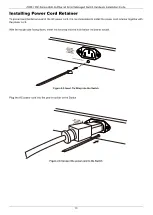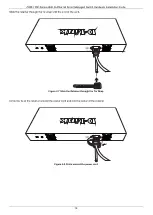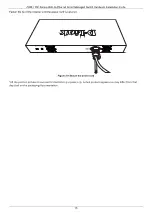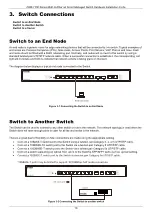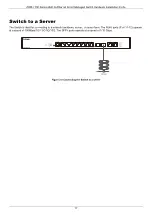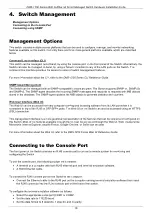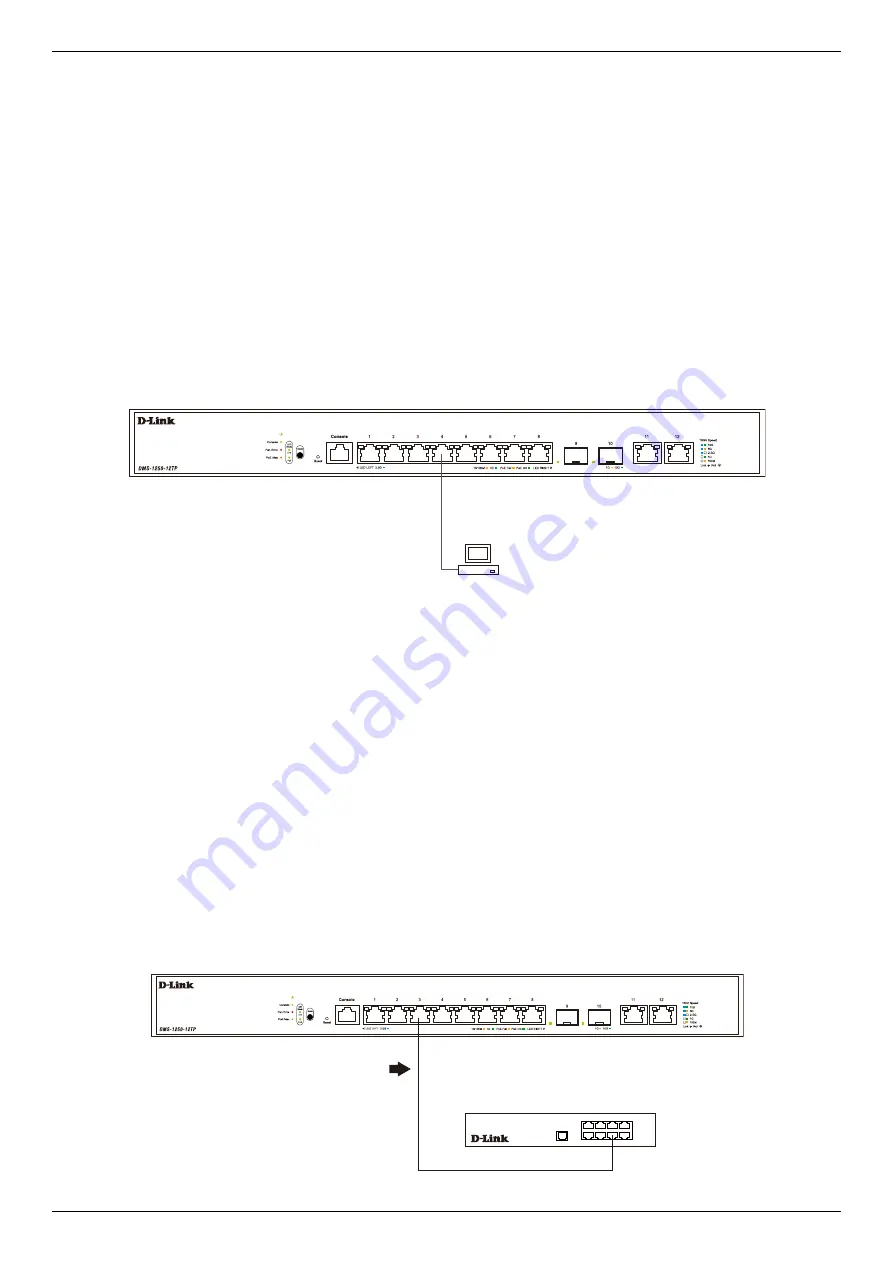
DMS-1250 Series Multi-G Ethernet Smart Managed Switch Hardware Installation Guide
16
3.
Switch Connections
Switch to an End Node
An end node is a generic name for edge networking devices that will be connected to this switch. Typical examples of
end nodes are Personal Computers (PCs), Notebooks, Access Points, Print Servers, VoIP Phones and more. Each
end node should be fitted with a RJ45 networking port. Normally, end nodes will connect to this switch by using a
standard twisted-pair UTP/STP network cable. When a successful connection is established, the corresponding port
light will illuminate and blink to indicate that network activity is taking place on that port.
The diagram below displays a typical end node connected to the Switch.
Figure 3-1 Connecting the Switch to an End Node
Switch to Another Switch
The Switch can be used to connect to any other switch or hub in the network. This network topology is used when the
Switch does not have enough ports to cater for all the end nodes in the network.
There is a great deal of flexibility on how connections are made using the appropriate cabling.
•
Connect a 10BASE-T switch port to the Switch using a twisted-pair Category 3, 4, or 5 UTP/STP cable.
•
Connect a 100BASE-TX switch port to the Switch via a twisted-pair Category 5 UTP/STP cable.
•
Connect a 1000BASE-T switch port to the Switch via a twisted pair Category 5e UTP/STP cable.
•
Connect a switch supporting an optical fiber uplink to the Switch’s SFP/SFP+ ports via fiber optical cabling.
•
Connect a 10GBASE-T switch port to the Switch via twisted pair Category 6a UTP/STP cable
1
.
1
10GBASE-T ports may be limited to support 10/100Mbps half mode connection.
Figure 3-2 Connecting the Switch to another switch
RJ-45 Connector
1 3 5 7
2 4 6 8
Switch
Ethernet cable












